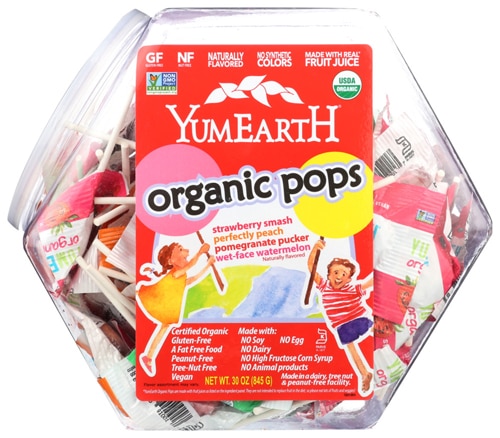With Valentine’s Day approaching, we’re virtually surrounded by the color red, especially in the form of candies, cookies, cakes and other treats prominently featured in stores everywhere during this month of hearts and flowers. Well, before you crunch into that cute red candy heart, you might want to get a better sense of what you’re eating.
Did you know that food manufacturers pour an astounding 15 million pounds of artificial food dyes into U.S. foods every year? According to a study from the medical journal Neurotherapeutics1, artificial food dye consumption has increased by 500 percent in the last 50 years! Sadly, children are the biggest consumers of these petroleum-based chemicals.
In a 58-page report, "Food Dyes: A Rainbow of Risks2," the Center for Science in the Public Interest (CSPI) revealed that nine of the food dyes currently approved for use in the United States are linked to health issues ranging from cancer and hyperactivity to allergy-like reactions.
So what about that bright Valentine red that appears in countless treats and confections each February? There are actually two dyes typically used to create red products.
Red 40, or Allura Red, is the most the most-widely used and consumed dye, appearing in bakery items, candy, prepared desserts, cereals, foods, drugs, and cosmetics. Studies show that Red #40 can cause hypersensitivity (allergy-like) reactions in some consumers, trigger hyperactivity in children, and has been linked with immune system tumors in mice.
The other red color commonly used in food—also the most controversial dye—is Red #3 or Erythrosine. Red 3 was recognized by the FDA as early as 1990 as a thyroid carcinogen in animals and is banned in cosmetics and externally applied drugs. And yet, amazingly, the FDA still permits Red 3 in ingested drugs and foods, with about 200,000 pounds of the synthetic dye being used annually. Red #3 is commonly found in oral medication, candy, popsicles, baked goods, sausage casings and, of course, maraschino cherries.
The dangers of food dyes
While manufacturers downplay the health risks of these chemicals, a 2004 analysis of 15 studies concluded that, at minimum, artificial food dyes increase hyperactivity in children. When you consider that over the past 20 years, the percentage of kids with attention deficit hyperactivity disorder (ADHD) nearly doubled3, it clearly makes sense to start connecting the dots.
Fortunately, it’s not hard to steer clear of chemical food dyes, especially for health conscious folks, as they are found almost entirely in processed, sugary and/or preserved food products which typically include many other unhealthy additives. As always, reading labels is crucial, since dyes must be listed in food products.
Here are some simple ways to avoid food dyes entirely:
Look for numbers on food labels
While we discuss red dyes here, other commonly used artificial food colors are just as risky, and even products marketed as healthy or “natural” may harbor these chemical additives. Numbers on the label will tip you off, so look for Red No. 3, Red No. 40, Yellow No. 5, Yellow No. 6, Citrus Red No. 2, Green No. 3, Blue No. 1, and Blue No. 2.
Avoid highly processed foods
It can be difficult to avoid all packaged foods for busy families with little time to cook, and you may periodically rely on pasta, bottled dressings, sauces, condiments, canned soups and more. Even so, you can target the least processed options, with the shortest listing of ingredients. You will almost invariably find that the longer that ingredient list is, the more unhealthy additives that product will contain.
Use natural food coloring
Even health-minded cooks and bakers may like to add a vibrant hue to certain foods and confections. Fortunately, there are many healthy alternatives to artificial food colors. In fact, many nutritional super foods are so densely pigmented that they make beautiful coloring agents, with the bonus of added wellness benefits.
This list of 12 amazing superfoods is a visual rainbow, and a little of each goes a long way in imparting rich color, typically without changing your intended flavoring. Think sunshine yellow turmeric, bright purple açaí powder or emerald green spirulina. You can also find food-based colors, like this pink derived from beets, or this gorgeous green from spirulina. Quick trick for peppermint candy filling or icing: along with your sweetener, add organic peppermint extract and a few leaves of fresh spinach and blend smoothly. Vibrant green!
Not only are artificial food dyes unnecessary, they may also have negative heath consequences—especially for kids, the main demographic targeted for artificially-colored products. Happily, we can say no to that fake glow. Here’s to coloring your world with beautiful, natural alternatives!




